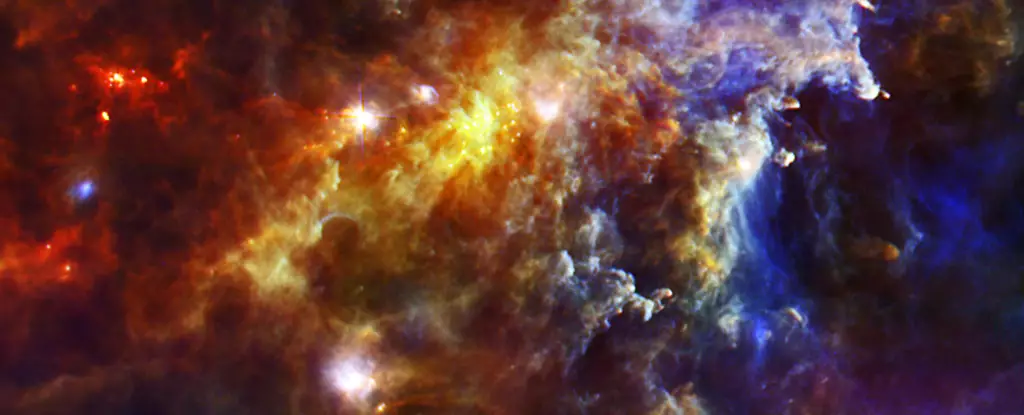In a groundbreaking revelation, researchers from MIT have unveiled the presence of complex carbon-based molecules in a remote interstellar gas cloud. This discovery not only broadens our understanding of the building blocks of life but also reinforces theories about the organic origins of life on Earth. By analyzing larger molecules, specifically a polycyclic aromatic hydrocarbon called pyrene, scientists are piecing together the intricate puzzle of how life might have arisen from the stars. This finding, published in the journal *Science*, emphasizes the significance of carbon chemistry in a universe that is seemingly as alien as it is familiar.
At the heart of this discovery lies the molecule pyrene, a complex construct comprised of multiple rings of carbon atoms. Carbon-based life, as we know it on Earth, requires such molecules to function coherently. The study’s implications suggest that similar large PAHs, which embody the essence of organic chemistry, likely existed in the frigid depths of the interstellar medium, where stars and planets are born. Intriguingly, pyrene is not just another entry in a catalog of interstellar substances but a pivotal component in understanding our origin story.
Previously, astrophysicists acknowledged the abundance of PAHs throughout space, but uncertainty remained regarding specific molecular compositions. Pyrene’s detection marks a monumental advance, particularly because it had been widely assumed that larger molecules could not endure the extreme conditions of star formation, where radiation could obliterate complex structures.
Astounding advances were made in the detection techniques used by the research team. Conventional radio telescopes are ineffective for identifying pyrene directly due to its invisibility in radio wavelengths. Instead, the team identified a compound known as 1-cyanopyrene, a product of pyrene’s interaction with cyanide—a prevalent species in the cosmos. This strategic advance allowed researchers to use the Green Bank Telescope to probe the Taurus molecular cloud (TMC-1), revealing the presence of pyrene through the detectable emissions of 1-cyanopyrene. This innovative approach showcases how creativity in scientific methodology can lead to major breakthroughs.
Moreover, this discovery comes on the heels of previous findings from asteroid Ryugu, where substantial samples of pyrene supported the notion that these molecules traveled through space before contributing to the formation of our Solar System. There’s a looming question—if pyrene endured the cosmic journey, how did it influence the evolutionary processes on nascent Earth?
The Implications for Early Life on Earth
This finding has profound implications for our understanding of the timeline of life on Earth. Geological records indicate that simple life forms emerged almost immediately after the conditions were favorable—approximately 3.7 billion years ago. For life to manifest so swiftly from the planet’s cooled crust, it is improbable that it could have emerged solely from simple molecules. The presence of complex, prebiotic molecules like pyrene suggests a rich source of organic material that could catalyze the beginnings of life.
Furthermore, this research dovetails with recent advances identifying chiral molecules in space, such as propylene oxide, which play an essential role in the development of life’s building blocks. The intertwining of these discoveries is pivotal, as it presents a compelling narrative: life’s ingredients quietly traversed the cosmos, waiting for the right conditions for complexity to emerge.
A Broader Perspective on Cosmic Chemistry
The revelations about pyrene and its precursors encourage us to reconsider the broader implications of organic molecules in extraterrestrial environments. Our current understanding of life’s origins on Earth could act as a template for searching for life elsewhere in the universe. If we can affirm that complex organic molecules existed in cold, dark gas clouds, then it broadens the search for life-supporting environments beyond our Solar System.
The research spearheaded by the MIT team represents a remarkable stride in interstellar chemistry. As we delve deeper into understanding the origins of organic compounds in the cosmos, the narrative of life ceases to be a unique terrene phenomenon and instead becomes a universal tale—one of molecules, chemistry, and the unyielding quest for existence beyond Earth. The undeniable connection between our world and the stars shines through as we explore the vast cosmos in search of our celestial heritage.


Leave a Reply